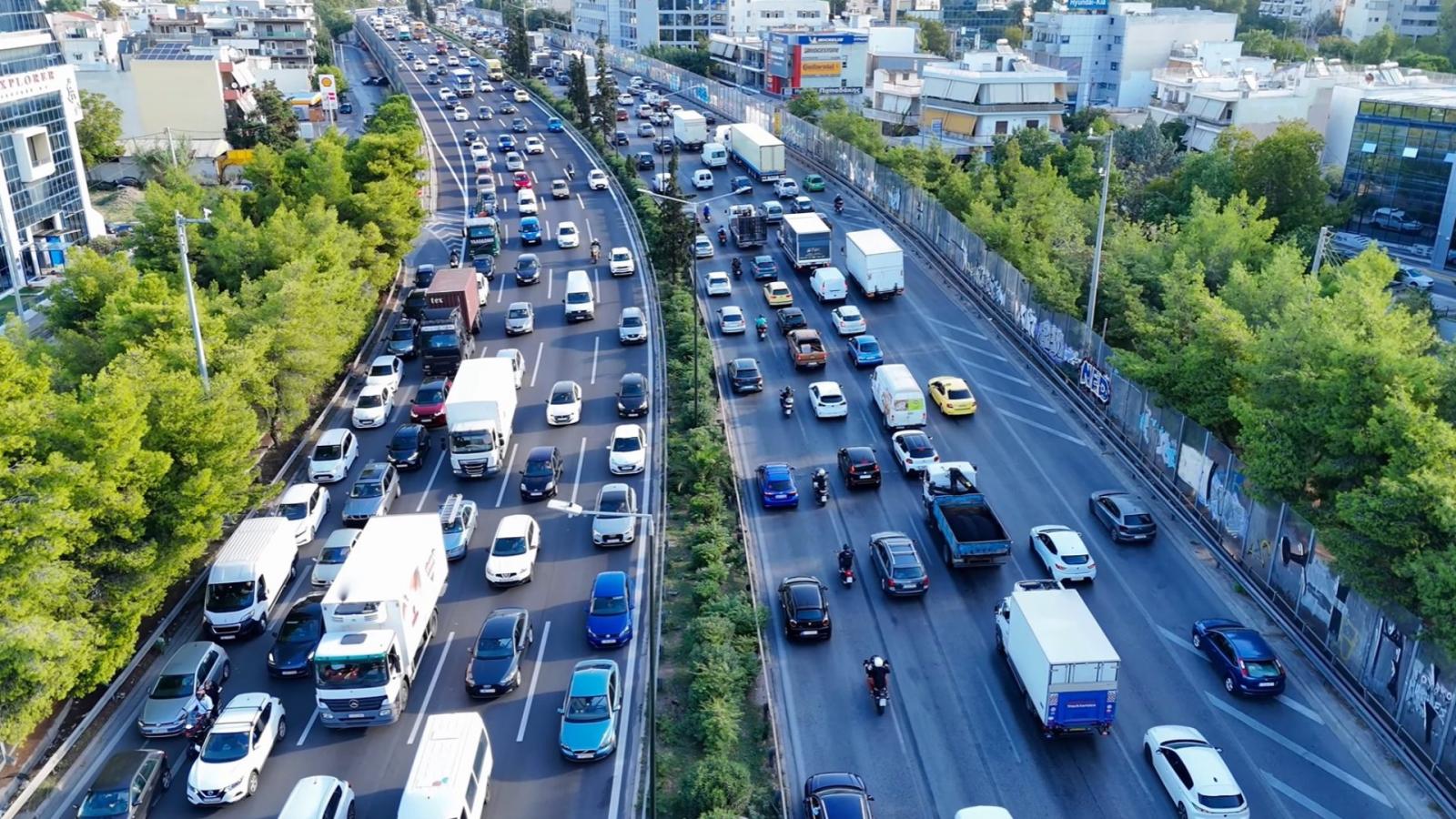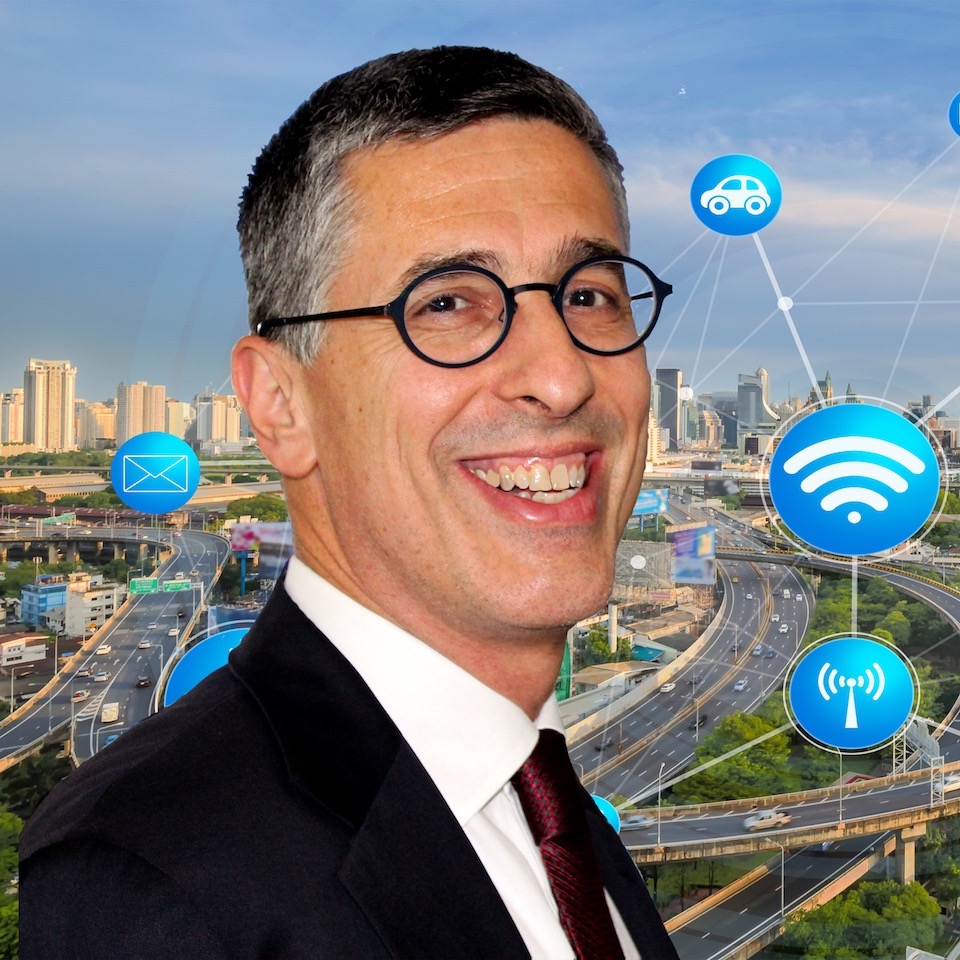We are trying to figure out what is going wrong in the Attica Region and we are experiencing these traffic congestion situations too many hours in the day. In the last few years, we would deal with increased traffic volumes in the afternoon around 7:30-8:30, but now, this is met almost all of the time of people’s activities to their jobs.
After the financial crisis and the COVID-19 pandemic, there has been a significant increase in the demand for transportation. More people want to move, especially during peak hours, resulting in traffic congestion. This phenomenon exists in all cities worldwide. It is not something new, it is not something that suddenly happens only in Athens, and it is not going away. In the European cities with which we are compared to, this traffic congestion, or even worse, has been present for at least 30 years. Our issue is not what will happen with the congestion, as it is not going to change anything.
Is there a solution to Kifissos?
There is no solution. In fact, in the coming years, we may even reach the level of congestion that Europe currently experiences because of growth and increased transport demand. There are minimal to zero interventions that can be made on the troubled Kifissos Avenue. Even if we utilize alternative routes and possibly intervene in the waiting time at traffic lights, in reality, any space we free up will be filled by more and more new vehicles.
No city in Europe has managed to solve its traffic issues; however, significant interventions have been made in their city centers. In major European cities, like France and Spain, driving into the city center has become economically unfeasible, leading citizens to move towards Public Transport or even bicycles for their commutes.
Public Transport
In the science of Transportation Engineering, we know that traffic always balances out in congestion. Even if we build more lines of metro or create more space, there will always be people who choose the metro, but free space will be filled up again with new vehicles. Therefore, our issue is not how to deal with traffic congestion. On the contrary, our issue is how to serve those who have to move via Kifissos, and, therefore, how to serve the entire population and all commuters. This is based on the basic principle that Public Transport is the solution. Only if we move massively during peak hours, we can satisfactorily serve all commuters. Undoubtedly, the fastest means is the metro, but it cannot be extended everywhere and does not cover the entire Attica Region.
Additionally, we can prioritize buses. The biggest obstacle is that bus lanes are occupied by other parked vehicles, resulting in the few private cars per square meter delaying the many commuters using Public Transport.
Thus, prioritizing Public Transport is essential. Undoubtedly, the primary criterion for choosing a transport mode is time. While the bus may be somewhat problematic, if it gets you faster in your destination, you will choose it.
Parking management
The second tool used in all cities is parking management. In Athens, the ability for anyone to park anywhere in the city center, whether illegally or legally, on the street or off, has led to increased use of private cars. In most European cities where they faced this situation in central areas, parking on the street has been prohibited and the relevant space has been allocated to pedestrians and cyclists. In this way, no vehicle can park on the street, vehicles do not enter into bus lanes, and, thus, commuters are forced to use Public Transport, resulting in faster travel.
Traffic congestion on Kifissos will not change, just as it has not changed in any other part worldwide. During peak hours, there will always be many vehicles and anyone who wants to take their car will move slowly. The issue is not to penalize those who use Public Transport; they should not be moving slowly, but we should ensure that they move quickly. Trying to solve the issue of Kifissos is completely futile and we are wasting our time and resources.
Giving priority to buses is a multifaceted issue. On one hand, the Municipality or the Region needs to designate bus lanes, the Public Transport Authority (OASA) needs to deploy buses, OASA along with Traffic Police needs to install cameras and Traffic Police needs to manage violations and penalties. All these entities need to coordinate, but they are not managing to do so. However, even if these measures are implemented, Kifissos will not be decongested; rather, those travelling from Piraeus to Kifissia and from Kifissia to Piraeus would have an alternative option to take a bus more quickly. The congestion would not be changed and potentially, it could be worsen.
The lack of a uniform cross-section
Kifissos Avenue is problematic. The fact that the cross-section changes, i.e. now and then we have three lanes, then four or five lines, is problematic. There should have been a uniform cross-section. When an incident happens (e.g. a vehicle gets stuck, a crash happens) long queues is created if we do not remove vehicles very quickly. For example, in case of an incident in Attiki Odos, it is resolved within 5 minutes because there are 110 patrols as opposed to Kifissos Avenue where there are only 4 patrols.
Obviously, if we deploy more patrols, we can clear out vehicles with issues and if we change the cross-section, the situation will be improved. However, these incidents are temporary. After a while, free space which was created will be occupied by new vehicles. The issue, however, is the transport demand and not the management of this axis. It is noteworthy that in November, the Public Transport Authority (OASA) installed 10 cameras on the bus lanes. According to Traffic Counts, when the bus lanes are not occupied by private vehicles, the routes are executed very quickly and reliably. In fact, in the first few days when the cameras were installed and operational, bus traffic in the bus lanes increased by 50%. At the same time, the speed of the route indicated that there is no need for more buses rather than faster routes. Therefore, space for buses is required.
If the process is not digitized as soon as a penalty occurs and a message is sent to the offender’s mobile phone, the traffic problem will not be solved. At the end of the day, people around the world choose the transport mode based on time required to arrive to their destination. If penalties are not certified and paid for, we will continue to demand new additional buses without solving the problem.
Interview on the broadcast of A. Lazou – M. Polidorou on the radio station Talk Radio 989 in January 2024

